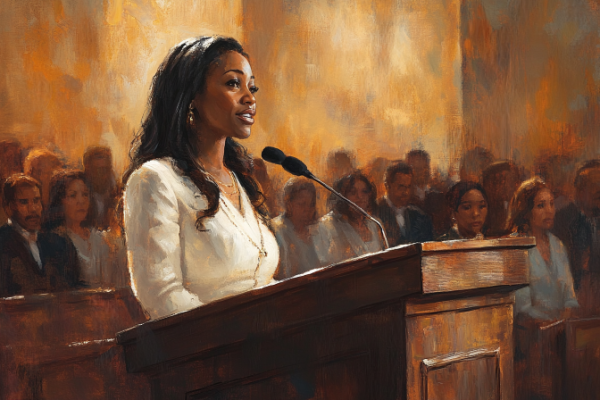Question
Gramps,
We had an investigator walk out of Sunday School because a woman was teaching. I need some scripture to help him overcome 1 Timothy 2:12.
Karen
Answer
Karen,
To fully grasp the implications of 1 Timothy 2:11-12, it is essential to consider the historical and cultural context in which Paul wrote. During Paul’s time, the early Christian Church navigated a complex landscape of beliefs and practices. The role of women in society was largely limited, particularly in Jewish and Greco-Roman cultures, where women were often excluded from public life and religious leadership.
Paul’s letters, including 1 Timothy, were written to address specific issues within the early Church, including false teachings and the need for order in worship. Scholars suggest that the directive for women to remain silent may have been a response to particular circumstances in the Ephesian Church, where Timothy was serving as a leader. Some scholars argue that this instruction was not a blanket prohibition against women speaking in church but rather a specific guideline aimed at maintaining order in a community facing challenges from false teachings and disruptive behavior.
Moreover, it is noteworthy that in other parts of his letters, Paul acknowledges and even commends women for their roles in the Church. For instance, in Romans 16, he mentions several women who played significant roles in the early Christian movement, including Phoebe, a deacon, and Junia, noted as “outstanding among the apostles.” This suggests that Paul’s views on women were more nuanced than a simple prohibition against their participation in church leadership.
The Church of Jesus Christ of Latter-day Saints has a rich history of women’s involvement, albeit within a framework that has often been interpreted as subordinate to men. From the early days of the Church, women have played vital roles in various capacities. The Relief Society, established in 1842 by Emma Smith, the wife of Joseph Smith, was one of the first organizations for women in the Church and focused on charitable work, education, and spiritual growth.
Despite the lack of priesthood ordination for women, their contributions have been significant. Women have served as leaders in various auxiliary organizations, such as the Relief Society, Young Women, and Primary, where they have had opportunities to teach, lead, and serve their communities. The Church has also recognized the importance of women’s voices in spiritual matters, as evidenced by the inclusion of women speakers in General Conference and other church meetings.
However, the tension between traditional interpretations of scripture and modern views on gender equality continues to be a point of contention. Many women within the Church advocate for a reevaluation of scriptural interpretations that seem to limit their roles. They argue that the principles of equality and partnership in marriage, as taught in the doctrine of the Church, should extend to all aspects of church life, including leadership and decision-making.
In recent years, there has been a growing movement within The Church of Jesus Christ of Latter-day Saints to reassess the role of women in light of contemporary understandings of gender equality. This movement is not about challenging the foundational doctrines of the Church but rather about seeking a more inclusive interpretation of scripture and Church teachings.
One significant aspect of this evolution is the recognition of women’s contributions to the Church’s mission. Women are increasingly seen as essential partners in the work of the Church, contributing not only through their roles in auxiliary organizations but also in their families and communities. The doctrine of eternal marriage emphasizes the equality of men and women, stating that “neither is the man without the woman, neither the woman without the man, in the Lord” (1 Corinthians 11:11). This principle shows the belief that both genders have unique and complementary roles that are equally important in the eyes of God.
Furthermore, the Church has made strides in promoting women’s voices in leadership and decision-making processes. The inclusion of women in leadership roles within the Church’s auxiliary organizations has provided opportunities for women to influence church policy and practice. Additionally, the Church has increasingly highlighted the importance of women’s experiences and perspectives in its teachings and programs, recognizing that their insights are invaluable to the Church’s mission.
Gramps







